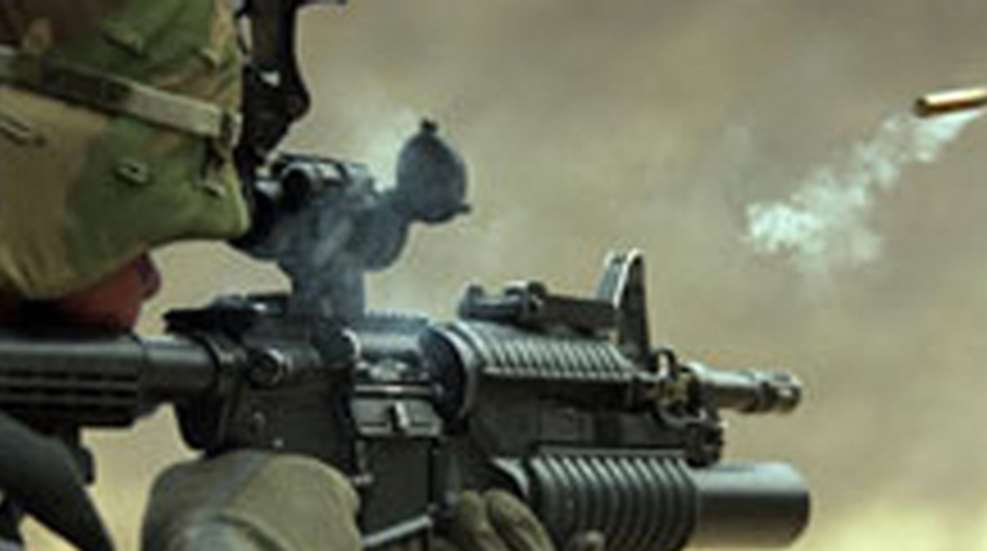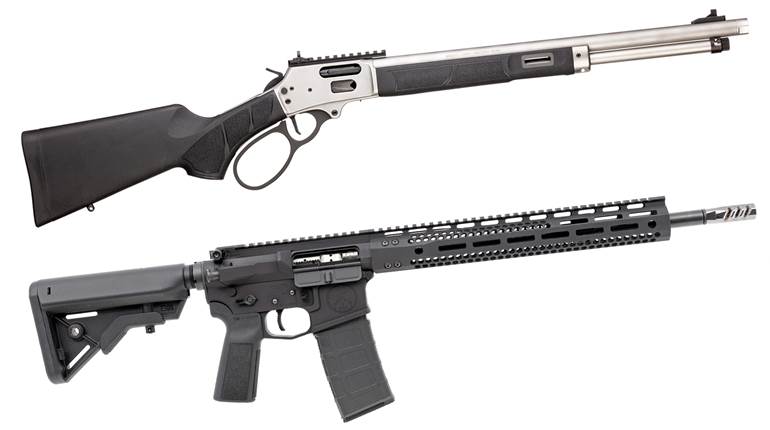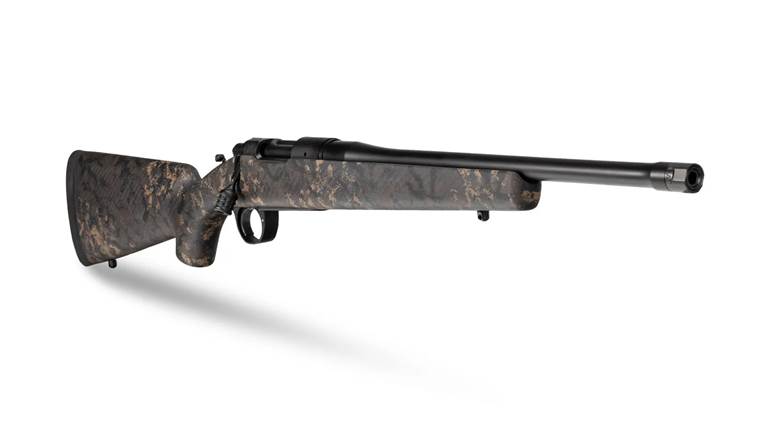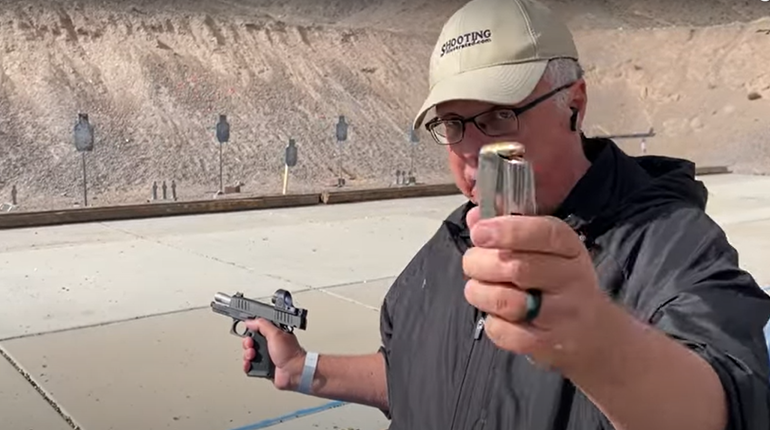
Like a starlet who acted in scores of B-movies before being “discovered” years after her debut, the AR rifle has suddenly become the darling of shooters nationwide. I don’t have to tell you what “AR” stands for, that it’s a generic moniker for anymodernsporting riflecopied from Colt’s original AR-15 semi-automatic version of the M16 developed for the U.S. military.
What might help, though, is to explain what distinguishes one brand of AR from another. Beginning with this exclusive first installment for AmericanRifleman.org, I’m going to cover ARs from muzzle crown to buttstock and everything in between. My first topic is the term “MilSpec” and what it means.
Because the AR has become a generic product, like the 1911 pistol, manufacturers have tried to set themselves apart with advertising claims and counter-claims, each of them trumpeting that their brand is better than the others. But how can that be? It would be as if Ford, Chevy, Honda and Volkswagen all decided to make exactly the same pickup truck with different hood ornaments.
How would you tell one truck from another? You’d have to look under the hood. So let’s look under the hood of an AR, starting with what it’s not.
MilSpec Criteria
Here’s the deal, and it’s very simple: Only rifles made for the U.S. military are MilSpec. For more than 50 years and through numerous iterations, experimental models and improved variations, the U.S. military has developed a detailed list of specifications for its service rifle. These “military specifications” are iron-clad.
MilSpec criteria include every aspect of the rifle, from the materials it’s made from to the treatment of those materials, the dimensions of components made from those materials, testing of these parts, wear and durability, accuracy, service life—every excruciating detail is specified.
Finally, and most importantly, a MilSpec rifle is approved by a U.S. government inspector. The inspection process assures that all rifles bought on a government contract meet the MilSpec and a related criteria called “military standard” or MilStd.
Ladies and gentlemen of the jury, I present you with the first piece of irrefutable evidence in the case of the falsely advertised AR. A manufacturer cannot claim that its AR is “MilSpec.” By definition, a MilSpec rifle must be tested and inspected by the government.
If that’s not proof enough, consider this: There’s no such thing as a civilian-legal MilSpec rifle. A MilSpec rifle is a rifle made to fulfill a government contract and, as of now, there are only three such “animals” walking around: the M16A4, which has a three-round burst-fire selector; the M4, which also is equipped with a three-round burst-fire selector; and the M4A1, which is a fully automatic rifle. These are all classified as machine guns and no civilian transfers can take place for any machine gun manufactured after 1986. You cannot legally own a MilSpec AR.
What About Parts?
So if it’s impossible to own a MilSpec AR, what about an AR made of MilSpec parts? Well, if there were such a thing, the first place to look would be one of the companies that make MilSpec rifles for the government. Perhaps they might have some extra parts lying around that they could use to build a civilian-legal AR?
Colt and FN are the only two government contract holders building the M4 and M4A1, which is the latest, most “tacti-cool” version of the AR. According to Colt, who ought to know, there is no such thing as a commercial AR that is MilSpec, even if most of the parts are identical to MilSpec parts being used in Colt’s M4s and M4A1s that are delivered to the government.
Now if anyone has a vested interest in making you believe that their ARs are MilSpec, it would be Colt. After all, the M16 and M4 are built used Colt’s Technical Data Package (TDP) which is a complex combination of know-how, proprietary techniques, fixtures and proprietary information that the historic manufacturer developed over decades of production. Even FN, their competitor, is required by contract to use Colt’s TDP.
Yet Colt is the first to admit that their commercial ARs are not MilSpec! I submit to you, ladies and gentlemen of the jury, that you now have your second and final piece of conclusive evidence that there is no such thing as a MilSpec AR.
However, don’t despair. It may be true that there’s no such thing as a MilSpec AR or even MilSpec components, but there are indeed ARs made of components that meet the same MilStd or MilSpec criteria as a genuine U.S. military rifle, excluding of course machinge gun parts, illegally short barrels and no government inspection.
To delve into the MilSpec criteria for all the components, sub-components, springs, parts and even the finish of an AR is beyond the scope of this story. However, that information is easily available online. The best sources of such technical information on the AR are the forums over at M4carbine.net.
Too Much Information
After you delve into the minutia of bolt carrier groups, magnetic particle inspections, H-buffers, staked gas keys and all the other indicators of a quality-made AR that, theoretically, meets most of the MilSpec criteria, your brain is going to explode. It’s just too much information.
Here, let me make it real easy for you: If your heart is set on making sure your not-possible-to-be MilSpec rifle as close as possible, my advice is to buy a Colt 6920. The 6920 is Colt's semi-auto-only Law Enforcement Carbine with a 16-inchM4-configuredbarrel, rather than the MilSpec 14.5-inch barrel, and a flat-top receiver.
The street price of a Colt 6920 is about $1,350, but I Googled “Colt 6920 for sale” and found them at Impact Guns new-in-the-box for $1,199.
You need to comply with all federal and state laws for ordering a gun online, going through your local dealer to handle the FFL paperwork and NICS background check, so add $50 for your dealer to perform this service.
If a Colt 6920 is out of your budget, there are other great ARs out there. We’ll take a look at some of them in my next installment.






































